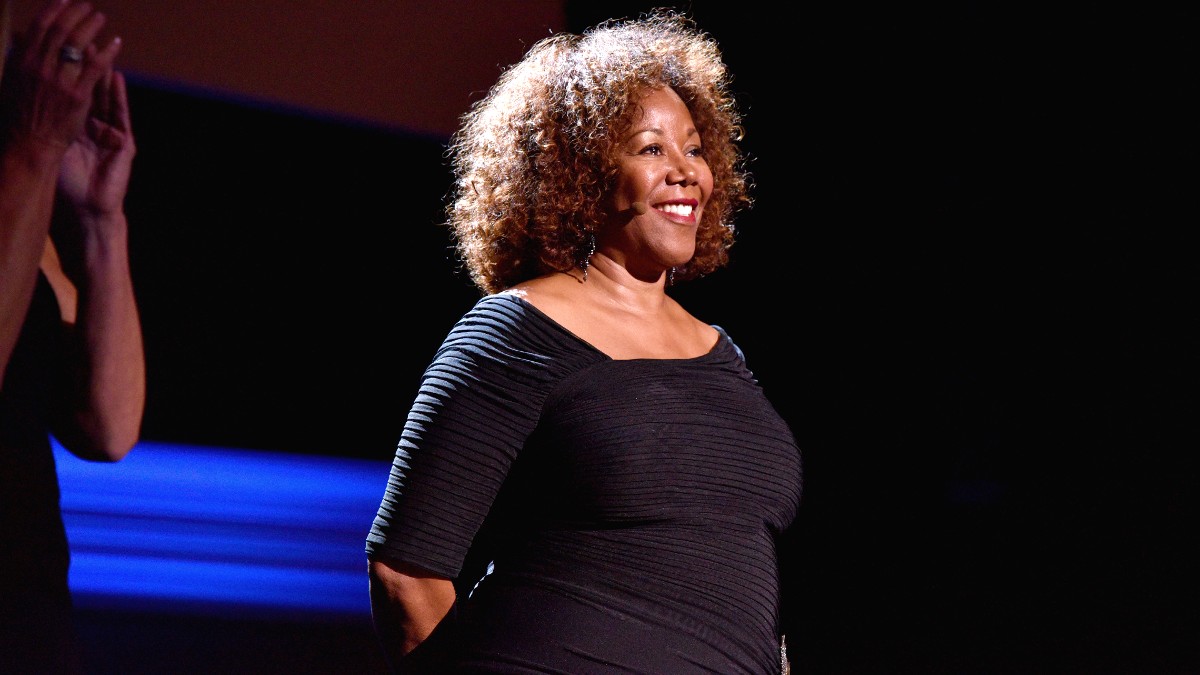Ruby Bridges Slams Censorship of Her Work: ‘My Biggest Fans Are Kids’

Author and civil rights activist Ruby Bridges is slamming book banners’ attempts to censor her work, reiterating how children are the ones most drawn to her powerful story.
Bridges’ story marked an important milestone in the Civil Rights Movement. Just months after she was born in 1954, Brown v. Board of Education ruled that racial segregation in American schools was unconstitutional and gave schools across the country six years to integrate. In 1960, Bridges was 6 when she became the very first Black student to attend William Frantz Elementary School in New Orleans.
The racial backlash was so intense that the little girl had to be escorted to school by federal marshals to protect her from an angry mob that hurled objects, racial slurs, and death threats at her. The image of her brave walk to school, flanked by deputy U.S. marshals, was captured by Norman Rockwell in a painting titled “The Problem We All Live With,” which has become an icon of the Civil Rights Movement, along with Bridges.
Bridges helped pave the way for other Black students to attend previously all-white schools, and her courageous stand against racism is one that can’t easily be forgotten. However, recently, right-wing politicians and parents have targeted Bridges’ story as part of their book-banning efforts. While these book banners claim that they are only removing books that are “obscene” and “pornographic” from schools, their attacks on Bridges’ work and biographies about her prove otherwise. In reality, they simply want to diminish BIPOC and LGBTQ+ voices in publishing, as well as block any book that doesn’t adhere to their white-washed version of history. Now, Bridges is speaking out against their attacks on her story.
Ruby Bridges slams book banners’ attempts to alter history
In a recent interview with NBC, Bridges addressed the book-banning efforts targeting her work. She’s no stranger to the efforts, as many of her children’s books, including her newest, Dear Ruby, Hear Our Hearts, have been banned in school districts nationwide. Books about her were also part of a whole slate of diverse works for which Scholastic created a separate, optional case at its book fairs, to make it easier for schools to reject them. Last year, Florida banned a 1998 Disney movie about Bridges for an entire school because one parent complained about it.
In most cases, the feeble excuse offered for censoring Bridges’ story is that it will make white children feel bad about themselves. However, Bridges called that excuse “ridiculous,” pointing out that children are most drawn to her story. She stated, “My biggest fans are kids all around the world. All of the letters, all of the mail, I have little girls from all walks of life, different nationalities that dress up like Ruby Bridges.”
It’s not difficult to understand why her story of resilience in the face of discrimination resonates with children. Countless children still face discrimination, bullying, harassment, and ostracization at school and know all too well the pain of being attacked for simply trying to get an education. Her story is becoming all the more relatable as schools in the U.S. are becoming increasingly hostile towards BIPOC and LGBTQ+ students, with efforts seeking to bar the teaching of Black history or prevent the mere mention of any LGBTQ+ topic. Bridges’ confirmed, “I found through … traveling that they [children] resonate with the loneliness, probably the pain that I felt. There’s all sorts of reasons that they are drawn to my story.”
Meanwhile, Bridges acknowledged the real reason book banners target her work: to alter history. She stated, “I believe that it’s just an excuse not to share the truth—to cover up history. I believe that history is sacred—that none of us should have the right to change or alter history in any way.” It’s not that book banners think their children will feel bad when reading Bridges’ story or even that they personally feel bad about it. It’s merely that her story doesn’t fit their narrative of downplaying racism and that there’s no reason to continue efforts toward equality.
However, Bridges’ experience did happen, and experiences like hers are still happening today. Bridges pointed out, “The history, all the subject matter that they want to ban, it’s happening in the world. We cannot live in a bubble, put blinders on like it’s not happening…we’re not hiding anything from our young people.” Children want to hear Bridges’ story because it’s real and has the power to inspire them and to make them feel less alone when faced with discrimination. Her history is still relevant to today’s issues, and book banners are doing the younger generation a huge disservice by trying to hide this history from them.
(featured image: Bryan Bedder/Getty)
Have a tip we should know? tips@themarysue.com